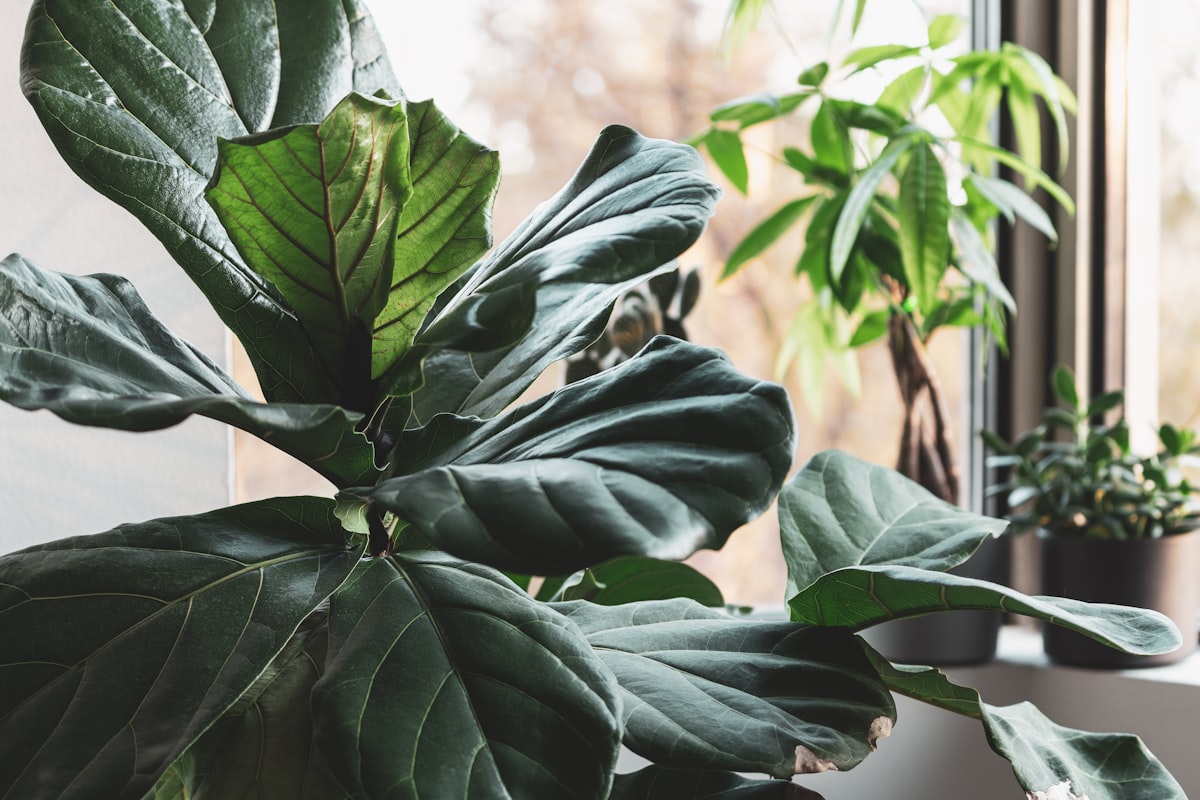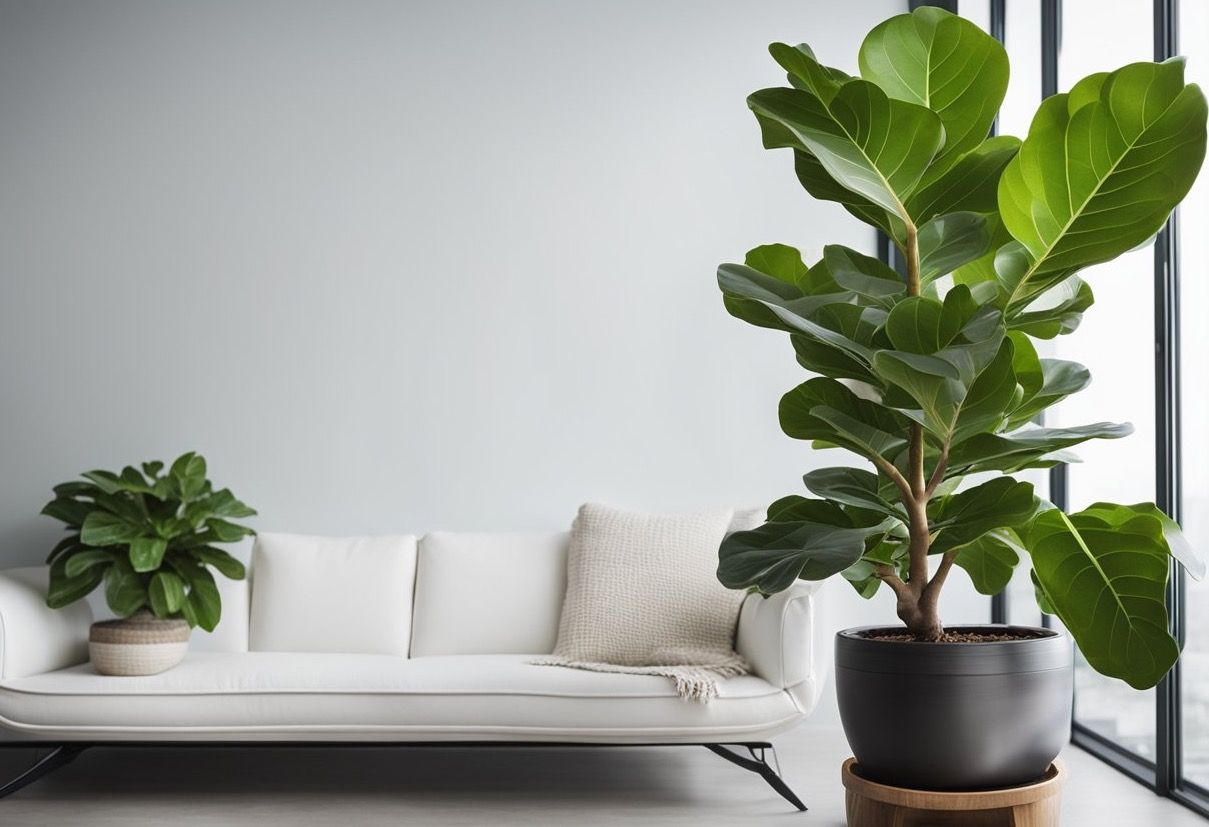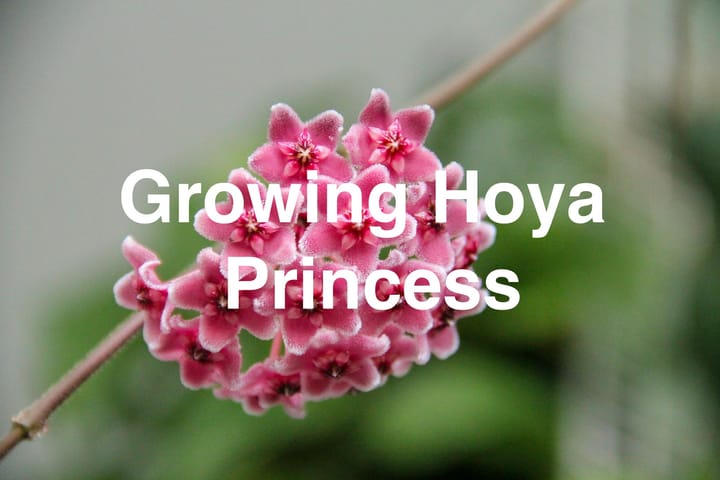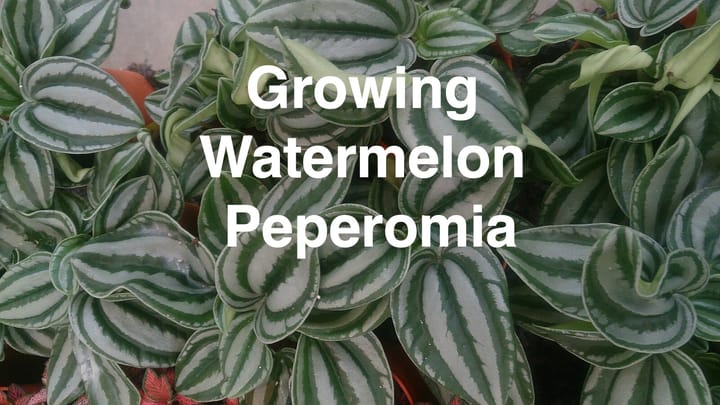How to Grow Fiddle Leaf Figs
Fiddle-leaf figs, native to tropical Africa, have become a popular houseplant for their large, distinctive leaves and ability to thrive indoors.

Table of Contents
As you may know, recreating their natural habitat's warm, humid conditions could be challenging, but with the proper techniques, you can successfully grow and care for a beautiful fiddle-leaf fig in your home.
Knowing the critical requirements for properly growing your fiddle-leaf fig, such as consistent, indirect bright light and steady temperatures between 65 and 75 degrees Fahrenheit, will ensure it flourishes.
Handling issues like root rot and finding the ideal humidity levels will help you enjoy this stunning plant for years.
About Fiddle Leaf Figs
The Ficus lyrata, or fiddle-leaf fig, little fiddle, or banjo fig, is an indoor tree with large, glossy, violin-shaped leaves that grow upright on a sleek trunk.
Originally from nature's tropical rainforests, it has become a popular and stylish choice for decorating homes and offices.
In its natural habitat, the fiddle-leaf fig relies on a specific wasp for pollination, which makes it almost impossible to produce edible fruits in your indoor environment.
Despite this, you can enjoy the aesthetics of its lush foliage, turning your space into a touch of nature without worrying about including it in your grocery store shopping list.
Growing Fiddle Leaf Figs
To plant a Fiddle Leaf Fig, it's crucial to create its natural tropical habitat within your indoor space.
Choose a well-draining potting soil and a container with drainage holes; poor drainage can lead to root rot.
You should also place a saucer under the container to catch excess water.
Water your Fiddle Leaf Fig consistently, monitoring the soil to ensure it stays slightly damp without being overly wet.
For optimal growth, expose the plant to bright, filtered light and provide a stable indoor environment with a constant temperature.
Remember to feed your plant with a well-balanced houseplant food in spring, following the product's instructions to avoid over-fertilizing.

Caring for Fiddle Leaf Figs
Sun and Temperature
Your fiddle-leaf fig needs consistent indirect bright light to grow.
Be sure to keep the plant in a stable environment with temperatures between 65 and 75 degrees Fahrenheit.
Water and Humidity
Water your fiddle-leaf fig when the top layer of soil feels dry.
Maintain a humidity level between 40 and 60 percent by using a humidifier or placing the plant near a source of moisture.
Soil
Fiddle-leaf figs thrive in well-draining, nutrient-rich soil. Consider using a mix of houseplant potting mix, orchid bark, and perlite to provide the best conditions for your plant.

Fertilizer
Feed your fiddle-leaf fig with a balanced liquid fertilizer every month during the growing season.
Reduce to once every two months during the winter to avoid over-fertilizing.
Repotting
Repot your fiddle-leaf fig every 12 to 18 months as it grows.
Choose a new pot that is 2 to 3 inches larger in diameter and has good drainage to ensure healthy root development.
Pruning and Propagation
Prune your plant to control its height and promote bushiness by cutting back long stems.
Propagate your fiddle-leaf fig using stem cuttings or air layering, and place them in soil or water for root development.

Troubleshooting Plant Problems
Growing Problems
If your fiddle leaf fig is experiencing leaf drop or root rot, it's essential to address the issue quickly.
Poor drainage and overwatering are common causes; ensure you're providing adequate watering, especially in winter when growth slows.
Yellowing leaves or a drooping stem may indicate underwatering, while brown spots or patches on leaves could indicate sunburn or fungal disease.
Make adjustments to your plant's lighting and placement as necessary.
Pests and Diseases
Look for common pests, such as insects that can infest your fiddle leaf fig plant, including aphids, mealybugs, and spider mites.
Treat these pests using a natural insecticide or neem oil if you notice them.
Root rot treatment may require repotting your plant with fresh soil or trimming away infected roots.
For other diseases like bacterial infections, it's important to promptly remove affected parts of the plant and treat it with appropriate products.
Companion Planting
To maintain a healthy fiddle leaf fig, consider companion planting with other plants that can help improve its growing conditions.
Companion plants should have similar watering and lighting needs; some can even naturally repel pests.
Be mindful of each plant's requirements and ensure they thrive together in your chosen space.
Conclusion
By maintaining consistent warmth between 65 and 75 degrees Fahrenheit, with humidity levels between 40 and 60 percent.
Ensure proper lighting, watering, and pruning practices to prevent common issues such as root rot will help your plant thrive and grow into a stunning addition to your home.
Frequently Asked Questions
What is the ideal soil for fiddle leaf figs?
Choose a well-draining potting mix for your fiddle leaf fig. A mix containing perlite or orchid bark can enhance drainage and aeration, promoting root health.
How often should I water my fiddle leaf fig?
Water your fiddle leaf fig when the top 1-2 inches of soil feels dry.
This may vary depending on your plant's age, size, and environment, so monitoring the moisture level is important to avoid overwatering.
What type of fertilizer is best for fiddle leaf figs?
Use a balanced, liquid houseplant fertilizer diluted to half the recommended strength.
Feed your fiddle leaf fig during the growing season, from spring to fall, and avoid fertilizing during winter.
When and how should I prune my fiddle leaf fig?
Prune your fiddle leaf fig during the early spring or summer.
To encourage branching, cut back the top of the main stem or use a technique called "notching" to make a small cut just above a leaf node.
What are the ideal light conditions for fiddle leaf figs?
Fiddle leaf figs thrive in bright, indirect light. Protect them from direct sunlight, which may scorch their leaves, but ensure they get enough light throughout the day to encourage healthy growth.
What are some common pest problems, and how to treat them?
Pests like spider mites, mealybugs, and scale insects can affect fiddle leaf figs.
Treat these pests by wiping the leaves with a solution of mild, soapy water or using a suitable horticultural oil or insecticidal soap.
Regularly inspect your plant for any signs of pest infestations and act quickly to address any issues.



